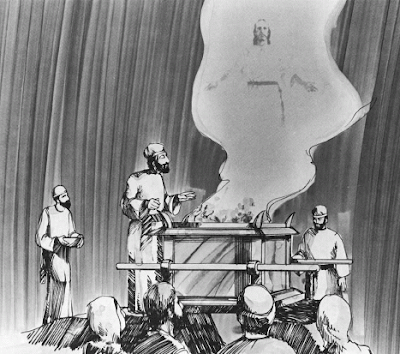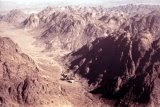 Mal 3:13-14
Mal 3:13-1413 Your words have been stout against me, saith the LORD. Yet ye say, What have we spoken [so much] against thee?
14 Ye have said, It [is] vain to serve God: and what profit [is it] that we have kept his ordinance, and that we have walked mournfully before the LORD of hosts?
Through the Prophet Malachi the Lord charges Israel with speaking harshly against him. He says that they feel that it is useless to serve God, to keep his commandments and to walk humbly.
Mal 3:15
15 And now we call the proud happy; yea, they that work wickedness are set up; yea, [they that] tempt God are even delivered.
Here God accuses them of having become cynical in their service because they feel like it is the proud and wicked of the earth that are really happy and evil doers and those who challenge God even prosper.
Mal 3:16-18
16 Then they that feared the LORD spake often one to another: and the LORD hearkened, and heard [it], and a book of remembrance was written before him for them that feared the LORD, and that thought upon his name.
17 And they shall be mine, saith the LORD of hosts, in that day when I make up my jewels; and I will spare them, as a man spareth his own son that serveth him.
18 Then shall ye return, and discern between the righteous and the wicked, between him that serveth God and him that serveth him not. (emphasis added)
The Lord answers them back by reminding them that he is watching all that they do and recording the names of those who fear and serve the Lord and speak to each other about him. These will be the blessed ones at his second coming and he will use them to make up his jewels. The "jewels" reference appears to be referring to the jeweled breast plate that the High Priest wore. Each jewel had the name of one of the tribes of Israel engraved on it. In a sense the High Priest, as a type of Christ, was carrying Israel on his shoulders and next to his heart. This is the group that will be spared at his coming because of their service to him.
In the Doctrine and Covenants the Lord explains how he will make intercession for this group that is spared:
D&C 45:3-5
3 Listen to him who is the advocate with the Father, who is pleading your cause before him--
4 Saying: Father, behold the sufferings and death of him who did no sin, in whom thou wast well pleased; behold the blood of thy Son which was shed, the blood of him whom thou gavest that thyself might be glorified;
5 Wherefore, Father, spare these my brethren that believe on my name, that they may come unto me and have everlasting life. (emphasis added)
Here we see that the Savior only draws to the attention of the Father, his works of the atonement, and asks the Father to spare those who have served him. Their personal service to God showed their good faith in him and his Son, their Savior, and was an indicator that they truly believed in him therefore, he is willing to use his atonement to cover their sins and spare them.
These verses should give us courage and spur us on to magnifying our callings which will show the Lord our good faith in him and his atonement. Our works are a token of our love and respect for him. As he said in John 14:15, "If ye love me keep my commandments."
















